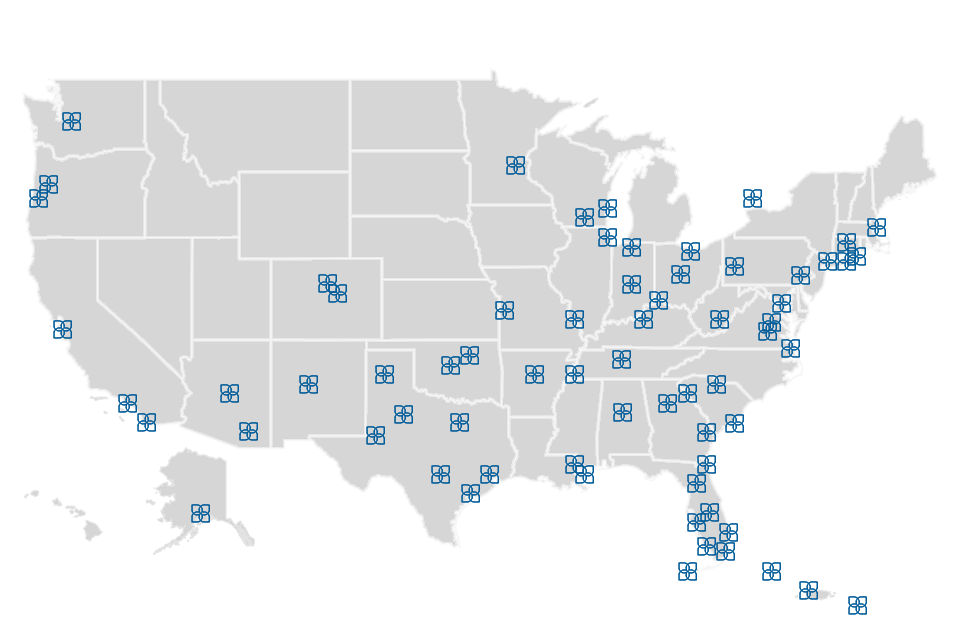How can buyers and sellers best prepare for a transaction in a new era of PIPs?
A hotel’s brand-mandated Property Improvement Plan (“PIP”) is one of the most crucial documents in a hotel or resort transaction. A PIP lays out a renovation scope and timeframe that a new hotel buyer must implement following a change of ownership. In recent years, PIP expenditures have increased profoundly, rendering an outsized impact on the sale proceeds collected by sellers. With the industry enjoying 98 consecutive months of RevPAR growth through April 2018, most brands have become more aggressive in their PIP renovation requirements, asking for more capital to be spent while the industry benefits from this profitable period in the economic cycle.
The ongoing proliferation of brand options has also contributed to rising PIP costs, as parent brands seek to differentiate consumer experiences at each of their sub-brands, partially through furniture packages, revamped amenities, and finishes. In certain instances, brands may also use PIPs to incentivize changes in sub-brands in markets where they may want to pave the way for the development of a new property under an existing flag, or downgrade or upgrade an existing hotel to a different chain scale within their brand umbrella. By tweaking the requirements and corresponding cost of PIPs with multiple sub-brand options, brands can largely dictate the positioning direction a new owner may be forced to take.
As sellers and buyers navigate a transaction and associated PIP, it is helpful to consider the following factors:
- Evaluate brand options: Sellers and buyers alike should always evaluate brand options during a change of ownership. If the existing franchise agreement is nearing its expiration, would an affiliation with a different brand allow the property to capture additional market share or increase its ADR? If the franchise is locked into place with the current brand, would the parent brand be willing to re-flag to a different sub-brand within their system, potentially providing additional revenue opportunities or operating efficiencies for the hotel?
- Plan for a realistic timeline: It takes time to get a PIP review in hand from virtually all the major brands. Usually, three to six weeks are required to prepare a PIP document that generally remains valid for six to twelve months. We encourage sellers to order PIPs as early in the sale process as possible, preferably before an asset even hits the market. Having the PIP document in hand prior to going to market helps sellers understand the capital expenditures that investors will be underwriting – critical information for estimating eventual sale proceeds when deciding whether to market a property. Once a hotel is listed for sale, sharing the PIP as early as possible allows a seller to convey cohesive and transparent information to the market, bolstering the effectiveness of the disposition process.
- PIPs are negotiable: Like most elements of a transaction, PIPs are negotiable to a certain extent. Brands are typically receptive to sellers and buyers who have existing relationships with the brand and own or manage other franchised properties. Both the scope and completion timeframe of a PIP are often negotiable. Is it possible to push back the bathroom renovation an additional twelve months? Would the brand consider removing certain elements of a PIP, taking into consideration all the other capital being spent at this property and other franchised hotels? Is there another property with the same flag that recently transacted but was not subjected to such an extreme PIP? We recommend that sellers negotiate as much as they can up front before sharing the PIP with potential investors, and also encourage buyers to take another bite at the apple with the brand once they have been awarded a property.
- Return on Investment: PIP renovations often create a path to increased profitability, providing a favorable return on investment. In most cases, new guestroom and public area furnishings allow a hotel to be more competitive both for transient and group demand. Investors will oftentimes underwrite both ADR and occupancy increases following a renovation, with the expectation that the property will increase its market penetration versus its competitive set. However, sellers and buyers alike need to be wary of situations where property efficiency and revenue potential is already maxed out prior to a renovation. In these situations, there may be very little financial justification for pouring additional capital into a property, and investors may opt to deduct estimated PIP costs from their purchase price on a dollar-for-dollar basis without allocating any ROI to their expenditure.
- Capital expenditures in excess of the PIP: Change-of-ownership PIPs typically revolve around guest-facing furniture and finishes in guestrooms, corridors, lobbies, meeting rooms, and other public areas. The PIP document, however, only paints a partial picture of the capital needs at a property. Oftentimes, items outside the scope of a PIP, including ROI projects, elevator modernizations, roof replacements, kitchen equipment upgrades, and maintenance to mechanical systems like chillers and boilers can cost investors (and by derivative, sellers) more than the PIP.
- Ask for capital expenditure estimates: Capital expenditures tend to be one of the largest variables in a transaction. For buyers, this means needing to understand sellers’ estimates of capital needs and how those figures factor into overall pricing guidance throughout a disposition process. We also encourage sellers to request estimates of PIP and other capital expenditures from prospective buyers as part of their Letters of Intent. This measure allows sellers to compare “all-in” valuations between investors on an apples-to-apples basis, minimizing the potential for unexpected roadblocks or purchase price reductions during the due diligence period of a transaction.
As brand options multiply, PIPs continue to take center stage in many disposition processes. Planning for, scrutinizing, and negotiating PIPs early on can directly increase proceeds to sellers and lower the costs for buyers in most hotel transactions.


